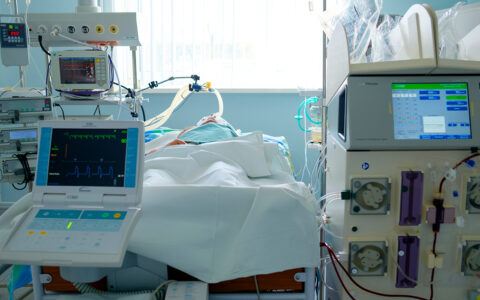Clinicians often face challenges distinguishing lung cancer from histoplasmosis, a fungal infection that creates cancer-mimicking lesions in the lungs. In a study published in Emerging Infectious Diseases last fall, investigators from Vanderbilt Vanderbilt University Medical Center and the University of Alabama at Birmingham revealed that the “histo-belt” of ideal conditions for the fungus extends significantly beyond previously identified regions of the United States.
Additionally, the Vanderbilt researchers have published findings indicating that a blood test for histoplasmosis antibodies could serve as a diagnostic tool for distinguishing cancer tumors from benign nodules caused by the fungal infection. The findings may help determine when biopsy surgeries are necessary in diagnosing lung cancer.
Monitoring Benign Nodules
Histoplasmosis is caused by inhalation of Histoplasma fungus that thrives in dark damp soil, but it is also spread by birds. Most infections are asymptomatic or are flu-like when symptoms do occur, and in the vast majority of cases, individuals recover from infection without ever being diagnosed.
In the study published February 2019 in Cancer Epidemiology Biomarkers & Prevention, researchers from Vanderbilt and Tennessee Valley TA Healthcare System tested serum from 152 patients presenting with pulmonary nodules. Twelve percent of those without cancer tested positive for both IgM and IgG histoplasmosis antibodies. All those cases turned out to be benign. Seventy-two percent of patients who tested positive for only the IgG antibody also had benign nodules, suggesting that clinicians may want to monitor those patients with subsequent CT scans at three- or six-month intervals instead of pursuing a tissue diagnosis.
“If you have histoplasmosis antibodies—IgG and IgM— in your blood that are both strong, positive tests… I’m not going to take you to the operating room.”
“If you have histoplasmosis antibodies—IgG and IgM— in your blood that are both strong, positive tests, based on the work we’re doing I’m not going to take you to the operating room,” said senior author Eric Grogan, M.D., associate professor of thoracic surgery at Vanderbilt. “I am going to say, ‘You need to be watched and let’s see how this does before we end up doing invasive procedures.’”
Limitations of the New Test
Active surveillance may not be clinically defensible, the researchers cautioned, because 11 patients who tested positive for only the IgG antibody also had cancer. Follow-up studies with larger numbers of patients are necessary to provide clarity, they concluded, as well as research to develop more sensitive biomarker tests for benign lung disease.
“If the test says you don’t have a histoplasmosis exposure, that doesn’t tell you that you have cancer,” said Stephen Deppen, Ph.D., an epidemiologist and assistant professor of thoracic surgery at Vanderbilt who collaborated with Grogan. “It just says we can’t measure if you had antibodies from exposure to a fungus that may have caused what we see on chest imaging. So, a negative test really does not help you. On the other hand, a positive test does.”
Additionally, the new test for histoplasmosis antibodies has limitations because people can still have nodules from a prior fungal infection for which their immune systems are no longer responding.
Clinical Application
Grogan and Deppen presented an update of their research March 7 to the National Institute of Allergies and Infectious Diseases. They are looking to form a benign lung nodule consortium with other medical research institutions across the country to validate and extend their work into clinical practice.
“The tools that we have are good for finding cancer. They are not good for ruling out benign disease.”
“Today, the tools that we have are good for finding cancer,” Deppen said. “They are not good for ruling out benign disease.”





